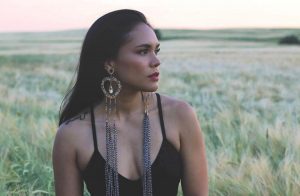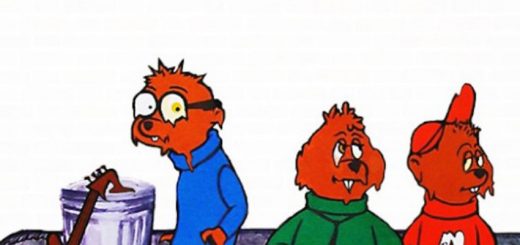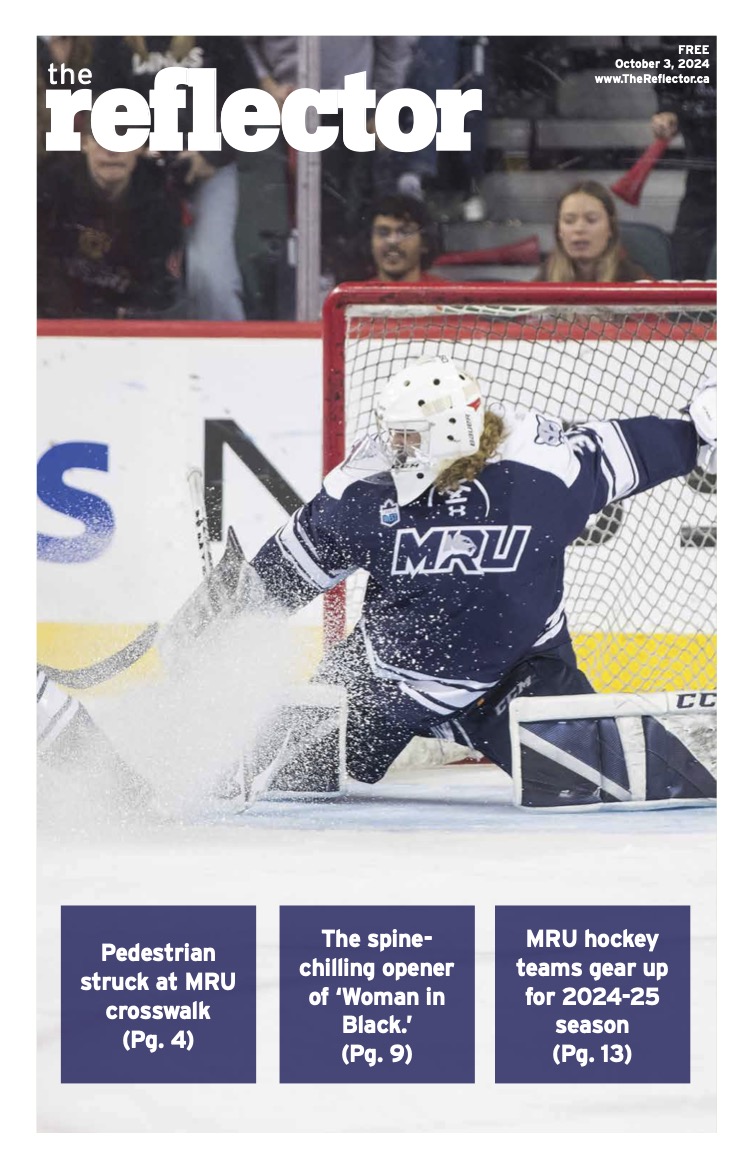Reconciliation through fashion and authenticity
Indigenous designers rise up in Canada to decolonize the runway
By Andrea Wong, Contributor
Otahpiaaki is an annual event held at Mount Royal University that showcases top Indigenous fashion designers and artists from around the country. The show acts as an expression of reconciliation and engages dialogue in appreciating Indigenous culture. A few of the fashion designers spoke about what their art means to them and where they see Indigenous fashion progressing in the future.
Brenda Lee Asp
“Slip on a drop of confidence and walk with pride” is a statement Brenda Lee Asp aims to embody through her clothing designs. Incorporating a contemporary blend of beading and formline-inspired artwork with natural materials such as bamboo, silk, velvet and leather, Asp creates pieces that feel just as good as they look.
“Our people have been colonized in so many different ways… so I view this as a way to help people feel proud again,” Asp says. “That’s what I’m trying to bring, something they can feel proud to wear.”
In the Yukon and northern B.C. where she grew up, Asp says her people had historical and ancestral ties in making their own clothing. Her grandmother owned a sewing center, which is where Asp spent most of her spare time. Early on, she was drawn to sewing and enjoyed “seeing the evolution of having a thought and seeing the product in the end.”
In the process, Asp also learned the value of patience and quality.
“I remember my grandmother saying it has to look as good on the inside as it does on the outside. You need to take your time to do it right. Take the time and the care to do it properly.”
However, Asp never imagined where her artistry could lead her.
During her search for something different, Asp attended the Blanche Macdonald Fashion Design program, where she learned new skills and also gained more confidence in her abilities.
After graduating, Asp received a phone call to develop a line for a fashion show in Ottawa. Up until that point, Asp had never printed her own artwork on her garments, but within two short months and an elaborate design process, she created her first collection.
“I think of how intimidated I was with learning and now that I’ve stayed in it, it’s become so second nature,” Asp says. “I’m aware of the growth that has come just through staying involved in my creation and not giving up.”
Since then, Asp has gone on to show her designs at large-scale events including the Couture Fashion Week in New York and Western Canada Fashion Week.
Now Asp is looking at how to turn her passion into a sustainable business and follow her vision of building up confidence in people.
“For me, being a fashion designer, showcasing success or striving for success… when we bring this out to the world and stand proud with what we do, that in itself is decolonization.”
Jamie Medicine Crane: Brave Woman Designs

Pieces from Medicine
Crane’s “Warrior Collection.”
The dresses and the black
jacket are all dedicated to
the missing and murdered
Indigenous women. Photo
courtesy of Jamie Medicine
Crane
Based on the meaning of her traditional Blackfoot name, Ahksistowaki, Jamie Medicine Crane’s clothing line Brave Woman Designs began as an endeavor to inspire her community.
As a former model and the first Indigenous woman to compete in Miss Universe Canada, Medicine Crane was familiar with the fashion world. But, what she wasn’t seeing was Indigenous designers represented in the mainstream fashion industry. This gave her the idea to start her own fashion shows.
Soon, Medicine Crane was gathering local models, photographers and artists from Kainai and Piikani First Nations in southern Alberta to participate in shows that would also promote their work.
When a few designers dropped out two weeks before one of her shows, though, Medicine Crane decided she would create her own clothing.
“That was kind of a debut to showcase some of the designs that we made,” she says. “But it was more so for the community, because I really feel that with all my art, it was always trying to inspire my community to try harder, for everybody to bring out their true gifts of themselves.”
Following the success of the show and requests for her designs, Medicine Crane has continued to create clothing that features traditional art from her Blackfoot heritage and can be worn everyday by all sizes and ages.
Through her pieces, Medicine Crane has held on to the advice she has received from her family and elders.
“‘Remember who you are, remember where you come from.’ That’s always been something big in my life in everything that I do,” she says. “So when I do those designs, I really try to bring that out, where I’m from, and I’m proud of it.”
Brave Woman Designs has also been a platform for promoting social justice, particularly for the strength of Indigenous women. At Calgary’s Red Dress Gala fundraiser, for example, Medicine Crane donated one of her pieces in honour of murdered and missing Indigenous women.
Medicine Crane says now is an exciting time in the fashion industry as more Indigenous designers are moving into the runway and are also challenging cultural appropriation.
“Our people are really strong and resilient,” she says. “I think that with just being present, it’s starting to decolonize the runway because we’re able to represent ourselves. We’re able to share our talents and our different pieces with the world now.”
Angel Aubichon: Indi City

Aubichon uses feathers, semi-precious stones, abalone shell, dentallium shell, leather, bone and mother of pearl to create her earrings. Photo courtesy of Angel Aubichon
For Angel Aubichon, her bead work is not just a craft. It comes from a story: The blood memory of her ancestors.
Growing up as Cree Métis in northern Saskatchewan, Aubichon had very little exposure to culture because her reserve had been so colonized. When she attended MRU though, she discovered an active Indigenous community and quickly became involved.
“I found the culture and pride and Indigenous identity was so strong. It was intoxicating,” Aubichon says.
As she began to connect with her culture and history, Aubichon also remembered the artistic memory she carried in hand. This skill, she says, was inherited from her kokum (great grandmother) who, at the age of 96 and without the use of her eyes, was still able to feel her way around bead work.
As Aubichon experimented with different bead shapes and using Indigenous materials like dentalium shells and leather, her earrings gained popularity online. It was only after Otahpiaaki, though, that she officially decided to launch her brand Indi City, which is a play on “indianicity” to reclaim the words Indian and authenticity.
“[That] was the point in which I felt like I had been waiting to meet this person my whole life, and after the runway show, I finally got to meet that person, and it was myself in the role of a fashion designer.”
Aubichon says her brand stands to translate Indigenous design for a modern audience and to create dialogue, especially in response to the stigma attached to cultural appropriation.
“We’re not just creating Indigenous designs for Indigenous people, we want to share it,” she says. “But I think we need to be conscious of how we consume Indigenous design… knowing that little bit about the designer that you’re wearing.”
Now in her thirties, Aubichon says her biggest teacher has been the mistakes she’s made. She looks to the Seven Grandfather Teachings, which she tries to encompass in her everyday life.
“I think that the minute you stop learning you stop growing,” she says. “I use beading as a metaphor for life for me because it really is one bead at a time… a meditation. Everyday is a passage of those things for me.”
Tishna Marlowe: Dene Couture and Six Red Beads

“Phreshi” (left) was the third gown Marlowe designed. It is made from 800 hand-carved caribou antlers, 1,500 fish scales, canvas and cotton. Photo courtesy of Tishna Marlowe
Tishna Marlowe is proud of who she is and where she comes from. An internationally recognized couture fashion designer, Marlowe sees her gowns as mediums for reconciliation.
“I have value and worth and contribution to society,” she says. “That’s why I do what I do, to show the world that there are amazing and beautiful Indigenous women out there.”
Growing up in the Northwest Territories, Marlowe says she had a community upbringing. She was raised by her grandparents, and her grandmother taught her everything she knew about beading and making clothing.
So when Marlowe noticed the lack of bead work on wedding and graduation dresses, she focused on creating gowns for Indigenous women in the modern world while drawing from the traditional styles and materials.
Each unique gown is a showcase of the techniques passed on to her, from incorporating natural berry dyes to the animal parts provided by her family.
One piece in particular that solidified Marlowe’s position as a designer was her third dress, which she says came to her in a dream as a gift from her ancestors. The finished product was a canvas dress with 800 hand-carved caribou antlers and 1,500 fish scales on it.
“The love that I have for my grandparents is so strong, I think that’s why what I do is so passionate,” Marlowe says. “I really associate my artwork to my grandma… for me, I want the world to know that she’s the one that taught me.”
Currently, Marlowe’s goal is to create Indigenous garments that are “100 per cent culturally authentic and true to the past,” which is why she continues to seek out long-lost art techniques such as how to weave porcupine quills on a loom or how to collect beads from the natural earth.
Marlowe is also concentrating her pieces on bridging the gap between the young and the old. In creating designs that can be appreciated by both, she is hoping to bring the two worlds together.
“All of what I do is about family… it’s about promoting culture and reconciliation through fashion,” she says. “I want to know that I’ve learned as much as I could, and compiled and passed on and taught as many people as I possibly could.”
Looking at the evolving fashion world, Marlowe foresees Canada’s Indigenous designers being taken seriously as their presence in the industry only continues to grow. Beauty standards are also changing to be more inclusive and appreciative of not only Indigenous people, but everyone else as well.
“I think the fashion industry has opened its eyes up and is letting different demographics and [ethnicities] in, and look at the beautiful fashion that’s coming,” Marlowe says. “It’s about garments that create education and dialogue, and that’s exactly what fashion is about.”




